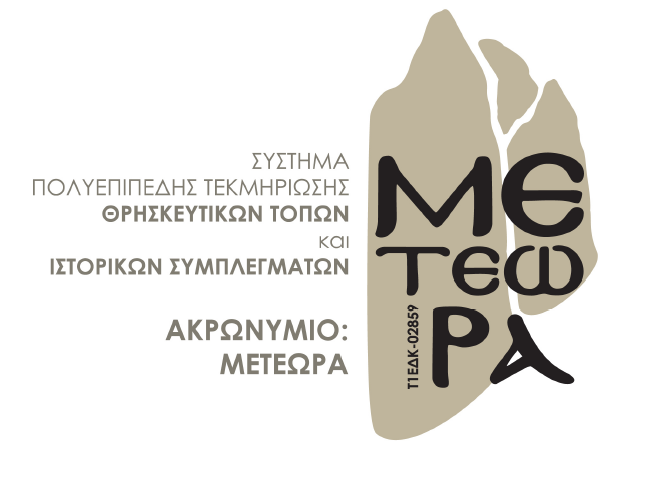The collection and systematic documentation of non-spatial data focus on the historical, religious, cultural, architectural and geopolitical aspects of the two rocks as well as the other monuments of the Holy Land of Meteora. In particular, the hagiologies and sequences/canticles of St. Modestos and the veneration of the Precious Chains of Apostle Peter are studied and partially recorded and the correlation of St. Modestos with other monasteries and churches in Greece and Balkans, as well as the etymology of the name “Modi” are being researched and documented. Scripts of the European travelers of the 19th and 20th centuries concerning the social, economic and national issues of the time as reflected in their narratives are collected and presented. Other information in the form of text concerns the historical development, the architecture, the iconography, the wood carving, the cultural values, the administrative status and general information about the rest of the monuments of the Holy Land of Meteora. The photographic material involves scanned manuscripts and excerpts of documents, relics such as gold embroidery, portable icons, hagiographies, silver-gold liturgical utensils, wood carvings and silver-gold crosses, etc. as well as documentation of the field work of 5dMeteora project team. The audiovisual material comprises old and present-time tours on the Monasteries of Meteora and snapshots from the team’s outdoor activities.
RESEARCH SOURCES
Sources of the literature research include digital libraries (Anemi, Medusa), digital repositories (Meteora Lithopolis) as well as physical libraries of the Aristotle University of Thessaloniki (AUTH), the Society for Macedonian Studies (SMS), the Center of Byzantine Research (CBR), the Institute for Balkan Studies (IMXA) and the Sismanoglio Hall of the Theological School of Halki in Constantinople. The personal data collections and the books of the publications of the Monastery of St. Stephanos constitute valuable sources of information about the Monasteries of St. Stephanos, of St. Trinity, Roussanou and St. Nicholas of Anapafsas. The narratives, engravings and travelogues of the 19th and 20th century travelers, such as Marie-Anne de Bovet, Joseph Mellot, Jacod Jonas Bjornstahl, Adolf Fredrik Sturtzenbecker, Robert Curzon, etc. who visited Meteora, reflect past social and national issues as well as geographical, folklore and ethnological information. In addition, interviews of local authorities on the customs and traditions and the collection of photographic material by local people further enrich the available data sources.

